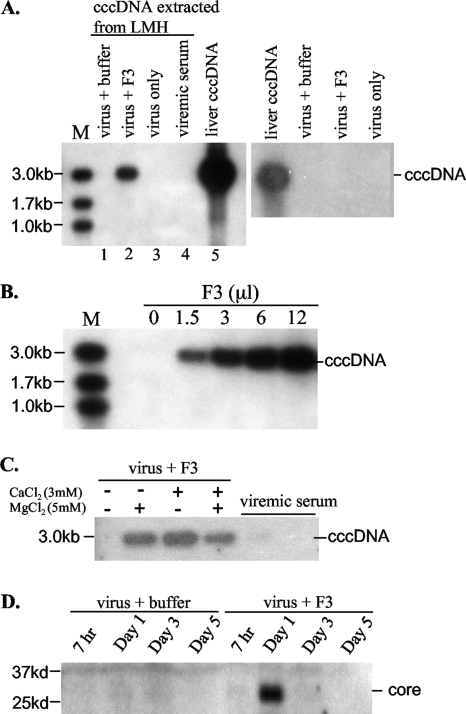FIG. 7.
Incubation of LMH cells with endosome-pretreated DHBV particles led to ccc DNA formation and core protein detection. (A) ccc DNA formation requires endosome treatment and incubation with LMH cells. Purified DHBV particles were pretreated with F3 or just buffer. (Left) Such particles were incubated at 37°C for 5 h with LMH cells. Cells were harvested 24 h later. Protein-free DNA was extracted by phenol, and the ccc DNA was amplified by RCA. The RCA product was digested with EcoRI, and the 3-kb DHBV DNA was detected by Southern blot analysis. The ccc DNA extracted from the DHBV (+) liver served as a positive control, while DNA extracted from viremic duck serum served as a negative control. M, marker. (Right) F3- or buffer-treated virus particles were used directly for DNA extraction followed by RCA. (B) Effects of different doses of the endosome used for digestion of DHBV particles. The pretreated particles were used for incubation with LMH cells, followed by ccc DNA detection by RCA. (C) Effect of divalent cations on ccc DNA formation. Note that a lack of the divalent cation in the digestion buffer prevented ccc DNA formation. (D) Western blot analysis of DHBV core protein from LMH cells incubated with pretreated virus particles. Note that core protein detection in LMH cells requires endosome pretreatment of DHBV particles. The loss of signal at days 3 and 5 postinfection is probably due to degradation of the disassembled core protein.

